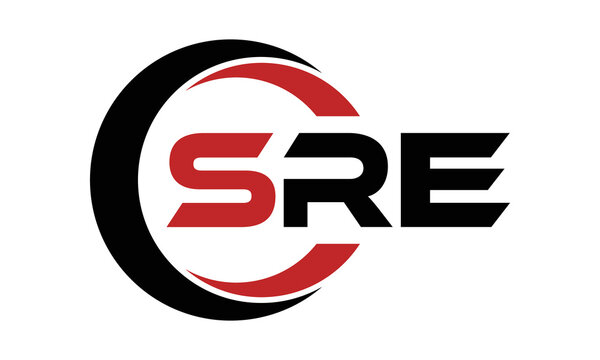Site Reliability Engineering, commonly known as SRE, is one of the most transformative disciplines to emerge in modern software engineering and operations. It bridges the gap between traditional software development and IT operations, redefining how complex systems are built, deployed, monitored, and maintained. SRE is not merely a set of practices but a philosophy, a cultural shift in how organizations approach system reliability, scalability, and efficiency. Born at Google in the early 2000s, SRE has since become a foundational pillar of large-scale software systems across industries. Its principles now guide how web applications, cloud services, and distributed infrastructures are designed to meet ever-growing user demands while maintaining reliability and speed.
At its core, SRE is about ensuring that services remain reliable and performant even under conditions of high load, rapid deployment, and continuous change. It introduces software engineering principles into system operations, emphasizing automation, observability, and accountability. While traditional operations teams focused on manual system maintenance, SRE teams use code to manage infrastructure, measure reliability quantitatively, and automate responses to failures. This proactive, data-driven approach ensures that systems are resilient, self-healing, and scalable.
Understanding SRE requires exploring not only its technical dimensions but also its philosophical and organizational underpinnings. It is a mindset that balances innovation with stability, ensuring that new features and system improvements do not come at the cost of downtime or degraded performance. This article provides a comprehensive exploration of Site Reliability Engineering—its origins, core principles, operational strategies, tools, cultural foundations, and its evolving role in the future of cloud-native computing.
The Origins and Philosophy of Site Reliability Engineering
The concept of SRE was developed at Google around 2003 when Ben Treynor Sloss, a software engineer, was tasked with making Google’s massive production systems more reliable. Instead of relying solely on system administrators, Google built a team of engineers who would apply software engineering principles to operations. This new hybrid discipline became known as Site Reliability Engineering. The fundamental idea was simple but revolutionary: “What happens when you ask a software engineer to design an operations team?”
This approach emerged at a time when large-scale distributed systems were growing exponentially in complexity. Traditional IT operations could no longer keep up with the scale and speed required by internet-scale services. Manual intervention, ad hoc scripts, and reactive firefighting were not sustainable. The solution lay in automation, standardization, and measurement—principles that are now at the heart of SRE.
The philosophy of SRE is grounded in three key beliefs. First, reliability is a feature that can be designed, measured, and improved like any other aspect of software. Second, engineers should spend their time on high-value engineering tasks rather than repetitive manual work, driving the principle of automation. Third, change is inevitable and necessary for progress, so instead of avoiding change, organizations must learn to manage it safely through controlled processes, error budgets, and continuous learning.
SRE represents a cultural convergence between development (Dev) and operations (Ops), predating but influencing the rise of DevOps. While DevOps emphasizes collaboration and shared responsibility, SRE provides concrete methods and metrics to achieve these goals. It formalizes reliability through service-level objectives (SLOs), service-level indicators (SLIs), and service-level agreements (SLAs), ensuring that reliability goals are measurable and actionable.
The Core Principles of SRE
Site Reliability Engineering rests upon several interlocking principles that guide how systems are built and operated. These principles encompass reliability, automation, measurement, risk management, and continual improvement. Reliability is the central focus, as the goal of SRE is to ensure that services deliver consistent performance within defined expectations. Yet reliability cannot exist without balancing other factors such as velocity and innovation.
One of the most distinctive principles in SRE is the concept of the error budget. Instead of striving for perfect uptime, which is both unrealistic and inefficient, SREs define an acceptable level of unreliability based on user expectations. The error budget represents the permissible amount of downtime or failure within a specific period, derived from the target service-level objective. If the SLO defines that a system must be available 99.9% of the time, the remaining 0.1% becomes the error budget. This pragmatic approach allows development teams to innovate and release features as long as they stay within the defined reliability boundaries. When the error budget is exhausted, release velocity slows, and efforts shift toward improving stability.
Automation is another pillar of SRE. Manual interventions are sources of inconsistency and error, especially in complex systems. SRE teams strive to automate repetitive tasks such as deployments, scaling, monitoring, and incident response. Automation not only improves efficiency but also enforces reliability by reducing the potential for human error. This automation-first philosophy is reflected in tools like configuration management systems, infrastructure-as-code frameworks, and automated incident response systems.
Measurement and observability ensure that SRE teams operate based on data rather than intuition. Every decision about reliability must be supported by metrics derived from real-world behavior. These metrics—latency, throughput, error rates, and saturation—form the foundation of SLIs. By continuously monitoring these indicators, teams gain insight into system performance, detect anomalies early, and make informed decisions about capacity and reliability.
Finally, SRE emphasizes continuous learning and blamelessness. When failures occur, as they inevitably do, SREs conduct post-incident reviews that focus on systemic improvements rather than individual fault. This culture of learning transforms failure from a liability into an opportunity for growth, ensuring that each incident strengthens the system and the organization.
The Relationship Between SRE and DevOps
Although SRE and DevOps share similar goals, they are distinct in implementation. DevOps arose as a cultural movement advocating collaboration and shared ownership between development and operations teams. SRE, in contrast, provides a concrete framework and technical practices to achieve these ideals. Where DevOps emphasizes principles such as “you build it, you run it,” SRE introduces metrics, automation, and engineering methodologies to make that responsibility sustainable.
SRE can be viewed as a practical implementation of DevOps, bringing rigor and quantitative analysis to operational practices. The introduction of SLOs and error budgets provides a measurable framework for balancing feature velocity and system stability—two objectives that often compete for priority. In DevOps organizations without formal SRE practices, reliability may still depend heavily on intuition and ad hoc decisions. SRE introduces discipline and predictability, ensuring that reliability goals align with business and user needs.
Both approaches converge around the idea of continuous delivery and infrastructure as code. Continuous integration and deployment pipelines, monitoring systems, and automated recovery mechanisms embody the shared philosophy of reducing manual toil and embracing automation. Yet SRE extends these practices with an emphasis on resilience, post-incident learning, and a formalized approach to measuring service health.
Defining Reliability Through SLIs, SLOs, and SLAs
Reliability in SRE is not an abstract ideal but a quantifiable objective. This quantification relies on three interrelated constructs: Service-Level Indicators (SLIs), Service-Level Objectives (SLOs), and Service-Level Agreements (SLAs). Together, they define, measure, and enforce the reliability expectations of a service.
Service-Level Indicators are metrics that reflect user experience. Common SLIs include request latency, error rate, throughput, and system availability. These indicators capture how users perceive service performance. For example, an SLI might measure the percentage of HTTP requests that complete successfully within 200 milliseconds.
Service-Level Objectives specify target values for SLIs. An SLO defines the threshold at which the service is considered reliable. For instance, a service might set an SLO that 99.9% of all requests should succeed within the latency threshold. SLOs act as the contract between engineering teams and business stakeholders, balancing reliability and innovation.
Service-Level Agreements, while similar, are typically external commitments made to customers. They may include financial penalties or compensation if the service fails to meet its defined targets. SRE teams focus primarily on SLIs and SLOs for internal measurement, using SLAs as higher-level accountability instruments.
The process of defining and refining these metrics is iterative. Overly strict SLOs may stifle innovation and increase operational costs, while overly lenient ones can lead to poor user experiences. Successful SRE organizations continuously adjust SLOs based on real-world feedback and evolving user expectations.
Monitoring, Observability, and Alerting
At the heart of SRE operations lies observability—the ability to understand the internal state of a system through its outputs. Monitoring provides the data; observability provides the context. Together, they enable proactive detection and resolution of issues before they impact users.
Traditional monitoring focuses on predefined metrics and thresholds, generating alerts when anomalies occur. Observability extends this by allowing engineers to explore why a problem occurred, not just whether it happened. It is achieved through the collection and analysis of logs, metrics, and traces—the three pillars of observability. Logs capture discrete events; metrics measure quantitative performance indicators; traces map requests as they propagate through distributed systems.
Modern observability platforms such as Prometheus, Grafana, OpenTelemetry, and Datadog exemplify these principles. They provide rich visualizations, real-time alerts, and correlation capabilities that empower SRE teams to diagnose issues efficiently.
Alerting strategies must balance sensitivity and noise. Too many alerts can overwhelm engineers and lead to alert fatigue, while too few can result in missed incidents. SREs define alert policies based on SLOs, ensuring that only user-impacting deviations trigger immediate action. Automated alert routing and on-call rotations distribute operational responsibility, ensuring continuous coverage without burnout.
Incident Management and Postmortems
Despite the best preventive measures, incidents are inevitable in complex systems. SRE transforms incident management from chaotic firefighting into a structured, data-driven process. The goal is not only to restore service as quickly as possible but also to minimize user impact and learn from every failure.
Incident response follows predefined protocols. When an alert triggers, the on-call engineer assesses the severity and impact of the issue. Incident severity levels help prioritize responses. Communication channels are established to coordinate mitigation efforts across teams. During this process, detailed timelines and data are recorded for later analysis.
After the incident is resolved, SREs conduct a post-incident review, often called a postmortem. Unlike traditional fault analysis, SRE postmortems are blameless. The focus is on understanding root causes, improving processes, and identifying systemic weaknesses. The goal is to prevent recurrence rather than assign fault.
A well-executed postmortem includes a timeline of events, a root cause analysis, contributing factors, remediation steps, and long-term prevention measures. It also tracks lessons learned and action items to ensure accountability. Over time, the accumulation of postmortems becomes an invaluable knowledge base, strengthening organizational resilience.
Automation, Toil Reduction, and Self-Healing Systems
One of the central tenets of SRE is the reduction of toil—manual, repetitive tasks that do not add long-term value. Toil reduction is achieved through automation, scripting, and system design improvements. SREs measure toil as a percentage of their operational workload, aiming to keep it below defined thresholds.
Automation transforms operations from reactive maintenance to proactive management. Continuous integration pipelines automate builds, tests, and deployments. Infrastructure as code enables consistent and reproducible environments. Configuration management tools such as Ansible, Terraform, and Puppet allow system state to be declared and maintained automatically.
Self-healing systems represent the pinnacle of automation. These systems detect anomalies, execute corrective actions, and restore service autonomously. Auto-scaling, failover mechanisms, and load balancing exemplify self-healing capabilities. As systems become more complex, self-healing architectures ensure reliability at scales beyond human operational capacity.
Capacity Planning and Scalability
Reliability is not limited to uptime—it extends to system scalability and performance. SRE teams are responsible for ensuring that systems can handle growing workloads without degradation. Capacity planning involves forecasting resource needs based on traffic patterns, growth projections, and seasonal variations.
SREs use performance testing, load modeling, and historical analytics to predict when systems will reach capacity limits. These predictions guide infrastructure scaling decisions, whether through horizontal scaling (adding more nodes) or vertical scaling (enhancing existing nodes).
Scalability must be designed into systems from the outset. Microservices architectures, distributed data stores, and stateless components enable horizontal scalability and resilience. SRE practices ensure that scalability mechanisms are tested regularly and that capacity is provisioned dynamically to meet demand.
Change Management and Continuous Deployment
Change is one of the leading causes of system outages. Yet change is also essential for innovation. SRE’s change management philosophy seeks to balance stability with progress. It emphasizes safe deployment practices, canary releases, feature flags, and gradual rollouts.
Continuous deployment pipelines integrate automated testing, rollback mechanisms, and progressive delivery. Before a change reaches all users, it is deployed to a small subset for monitoring. If no anomalies are detected, the rollout continues. If issues arise, automated rollbacks restore the previous stable version.
SREs integrate observability into deployment pipelines, ensuring that reliability metrics are monitored in real time during releases. This closed feedback loop enables rapid iteration without sacrificing stability. Over time, the system becomes more resilient as deployment processes mature and automation takes over most of the operational burden.
Security and Reliability Convergence
As cloud systems evolve, the boundary between security and reliability is blurring. Both disciplines aim to ensure that systems operate predictably under adverse conditions. SRE teams now incorporate security considerations into reliability practices, giving rise to the concept of Secure Reliability Engineering.
Reliability and security share common tools and principles: automation, observability, and incident response. SREs automate security monitoring, apply infrastructure-as-code to enforce configuration integrity, and integrate security tests into continuous delivery pipelines.
Moreover, post-incident reviews increasingly include security perspectives. A reliability incident caused by configuration drift may reveal security vulnerabilities; conversely, a security breach may expose weaknesses in operational resilience. The convergence of these disciplines leads to holistic system assurance—reliable, secure, and auditable by design.
The Human Side of SRE: Culture and Collaboration
Technical excellence alone cannot sustain reliability without the right culture. The SRE ethos is built on collaboration, transparency, and shared ownership. Development and operations teams work as equals, united by a common goal: delivering reliable services that delight users.
Blameless culture encourages openness in reporting incidents and discussing failures. Engineers are empowered to experiment and innovate without fear of punishment for honest mistakes. Psychological safety allows teams to learn continuously and improve systems iteratively.
Collaboration extends beyond the SRE team itself. Product managers, developers, QA engineers, and executives all play roles in balancing reliability with business priorities. SRE acts as the connective tissue, translating technical metrics into business impact and ensuring alignment across the organization.
SRE also addresses burnout through sustainable on-call rotations, workload management, and automation. A well-run SRE team ensures that engineers spend most of their time on engineering, not firefighting. This balance keeps teams healthy, motivated, and focused on long-term value creation.
The Future of SRE
As technology continues to evolve, Site Reliability Engineering is expanding beyond its original domain. The rise of cloud-native architectures, serverless computing, and AI-driven operations is reshaping how reliability is achieved. SRE practices are now being embedded directly into platforms through intelligent automation, predictive analytics, and self-optimizing systems.
Artificial intelligence and machine learning are enabling predictive incident management, where systems detect and resolve anomalies before they affect users. Observability platforms are evolving into autonomous reliability engines capable of correlating signals and triggering remediation actions without human intervention.
Moreover, the principles of SRE are spreading into new domains such as data reliability engineering, machine learning operations (MLOps), and edge computing. Each of these fields adapts SRE’s core ideas—automation, measurement, and reliability—to its unique challenges.
SRE’s influence also extends into organizational design. Many enterprises now structure their technology organizations around SRE-inspired reliability charters, aligning technical excellence with business resilience. The shift from reactive maintenance to proactive reliability engineering represents a paradigm change as profound as the original move from monolithic applications to distributed systems.
Conclusion
Site Reliability Engineering represents one of the most significant evolutions in modern computing. It transforms how organizations design, operate, and maintain complex systems, bringing engineering rigor to reliability. Through automation, measurement, and a culture of learning, SRE ensures that services remain robust, scalable, and responsive to change.
The principles that define SRE—error budgets, observability, automation, blameless postmortems, and shared ownership—are not just operational tools; they are cultural foundations for the digital era. As systems grow ever more complex, the need for disciplined, data-driven reliability practices becomes essential.
SRE is more than a role or a methodology—it is a mindset. It is about balancing innovation with stability, embracing change while safeguarding continuity, and building systems that can evolve gracefully under pressure. The future of digital services depends on reliability, and reliability depends on the principles of Site Reliability Engineering. As long as systems need to stay up, scale out, and adapt to the unknown, SRE will remain the compass guiding technology toward resilience and excellence.






